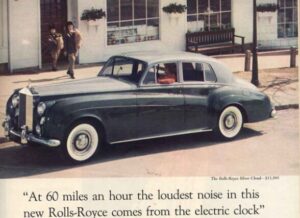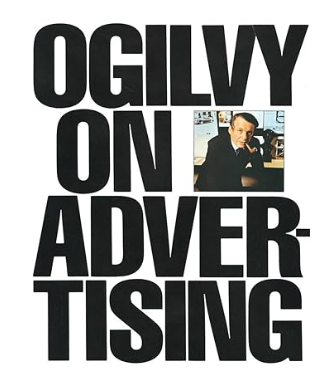Ogilvy on Advertising
David Ogilvy’s “Ogilvy on Advertising” is a seminal work that provides invaluable insights into the world of advertising. As one of the most influential figures in the advertising industry, Ogilvy’s principles and methodologies have shaped the way advertisements are created and perceived. This book, first published in 1983, remains a critical resource for anyone interested in the art and science of advertising. It is a comprehensive guide that covers various aspects of advertising, from the creative process to the intricacies of managing an advertising agency.

Key Themes and Concepts
Ogilvy emphasizes the significance of thorough research in creating effective advertisements. He argues that understanding the consumer’s needs, desires, and behaviors is crucial for developing campaigns that resonate. For instance, he highlights the success of the Hathaway shirt campaign, which was based on extensive research into what appealed to the target audience—upper-class, sophisticated men. The iconic image of the man with the eyepatch was not just a creative whim but a strategic decision grounded in research.
While creativity is often seen as the heart of advertising, Ogilvy insists that it should never overshadow the primary goal of advertising: to sell. He criticizes advertisements that are creative but fail to drive sales, coining the term “creative bloat.” An excellent example he provides is the Rolls-Royce advertisement that reads, “At 60 miles an hour the loudest noise in this new Rolls-Royce comes from the electric clock.” This ad is both creative and focused on a key selling point—silence, which implies luxury and quality.
Ogilvy underscores the importance of building a strong brand image and positioning it effectively in the consumer’s mind. He explains how brands like Dove and Marlboro were transformed through strategic positioning. The Dove campaign, for example, positioned the soap as a moisturizer rather than just a cleansing bar, differentiating it from competitors and creating a unique market niche.
Ogilvy dedicates considerable attention to the art of copywriting, stressing clarity, simplicity, and persuasiveness. He provides practical tips on writing compelling headlines and body copy. The famous ad for the tourism campaign, “Come to Britain,” exemplifies his approach. The headline is direct and enticing, and the body copy is filled with vivid descriptions and calls to action, effectively selling the destination.
The book also delves into media planning, emphasizing the importance of selecting the right channels to reach the target audience. Ogilvy’s discussion on the rise of television advertising is particularly insightful. He describes how television can create an emotional connection with the audience through visual storytelling, making it a powerful medium for advertisers. He provides the example of the “Schweppes” campaign, which used television commercials to create a sophisticated and desirable image for the brand.
Case Studies and Real-World Examples
Throughout the book, Ogilvy uses numerous case studies and real-world examples to illustrate his points. These examples not only provide practical insights but also make the book engaging and relatable. For instance, Ogilvy recounts the story of the “Man in the Hathaway Shirt,” a campaign that featured a sophisticated man wearing an eyepatch. This ad became iconic and significantly boosted Hathaway’s sales, demonstrating the power of a strong visual identity and compelling storytelling.
Another notable example is the “Schweppes” campaign, where Ogilvy used Commander Whitehead, a real-life naval officer, as the face of the brand. This campaign was successful because it created a distinctive and memorable character that embodied the brand’s values of sophistication and quality.
Ogilvy also discusses the successful launch of Dove soap. By positioning Dove as a moisturizer rather than just a soap, the campaign was able to differentiate the brand from its competitors. The message that Dove “doesn’t dry your skin” was simple yet effective, resonating with consumers and establishing Dove as a leader in the personal care market.
Practical Advice and Timeless Wisdom
One of the book’s greatest strengths is its practical advice. Ogilvy provides clear, actionable tips on various aspects of advertising, from writing headlines and body copy to selecting the right media channels. He emphasizes the importance of honesty and integrity in advertising, arguing that deceptive practices ultimately harm both the consumer and the brand.
Ogilvy also shares his thoughts on the future of advertising, predicting the rise of television and the continued importance of print media. While some of his predictions have been surpassed by the advent of digital media, the underlying principles remain relevant. His emphasis on understanding the consumer, crafting a compelling message, and maintaining high ethical standards are timeless lessons that continue to resonate in today’s advertising landscape
